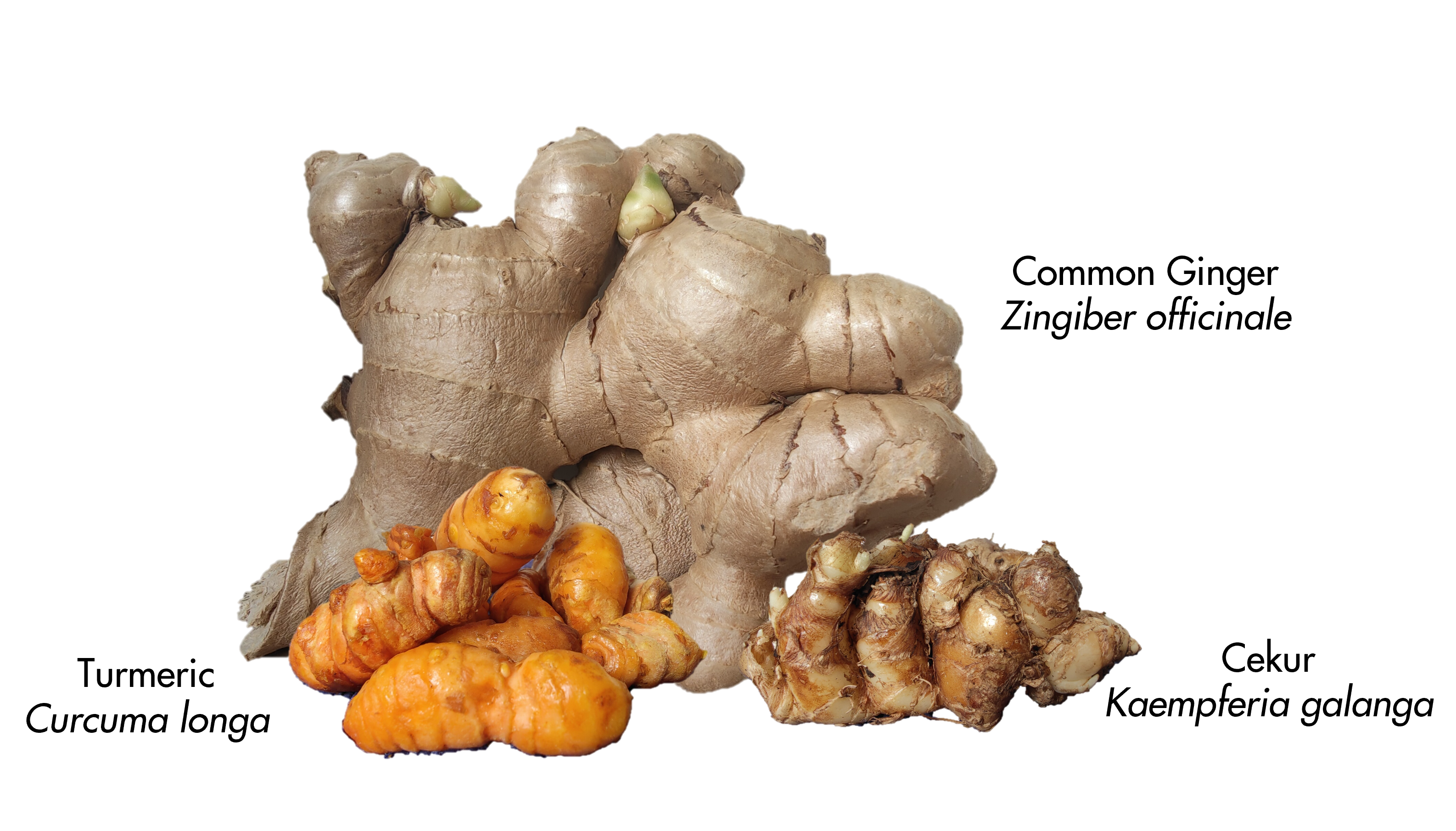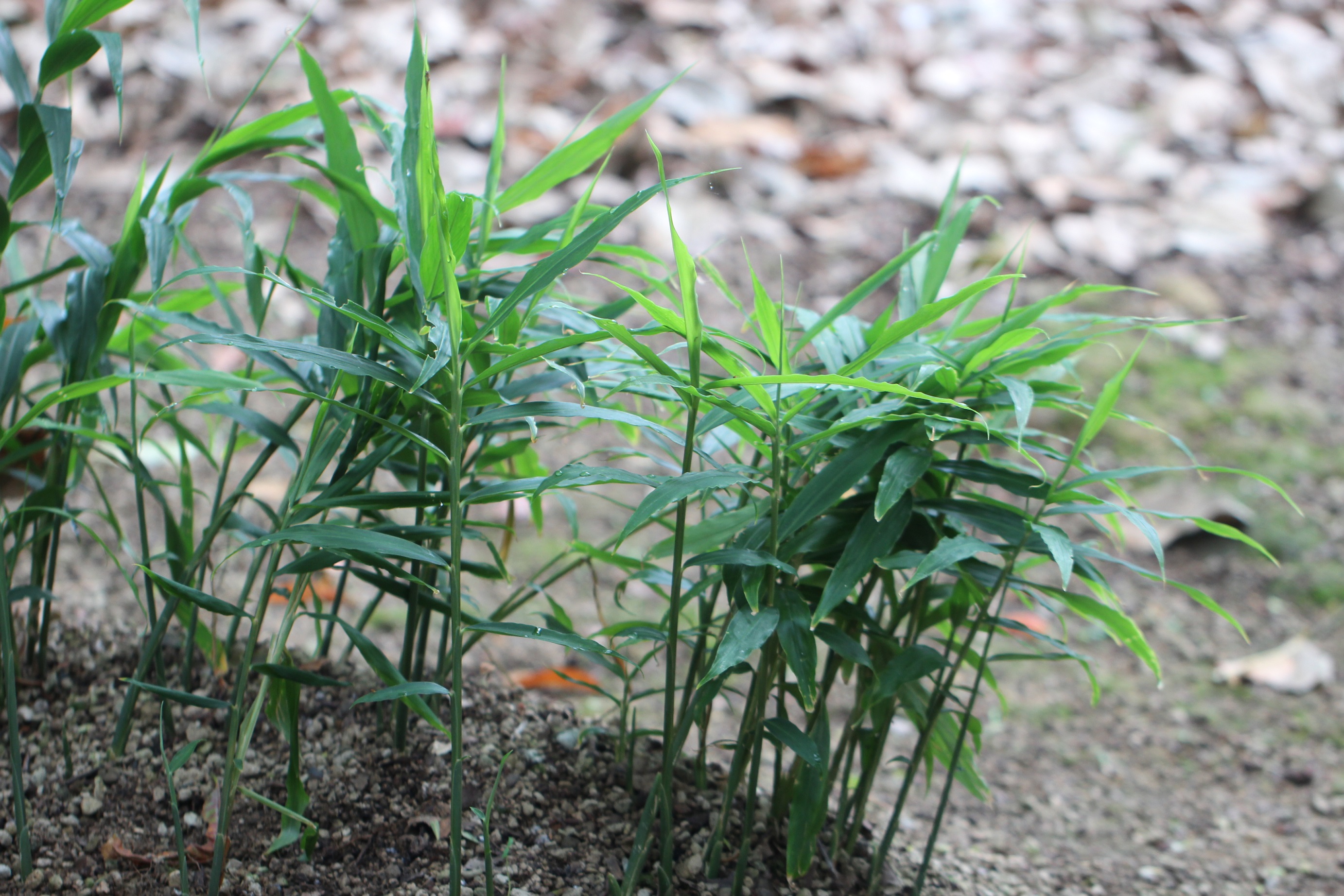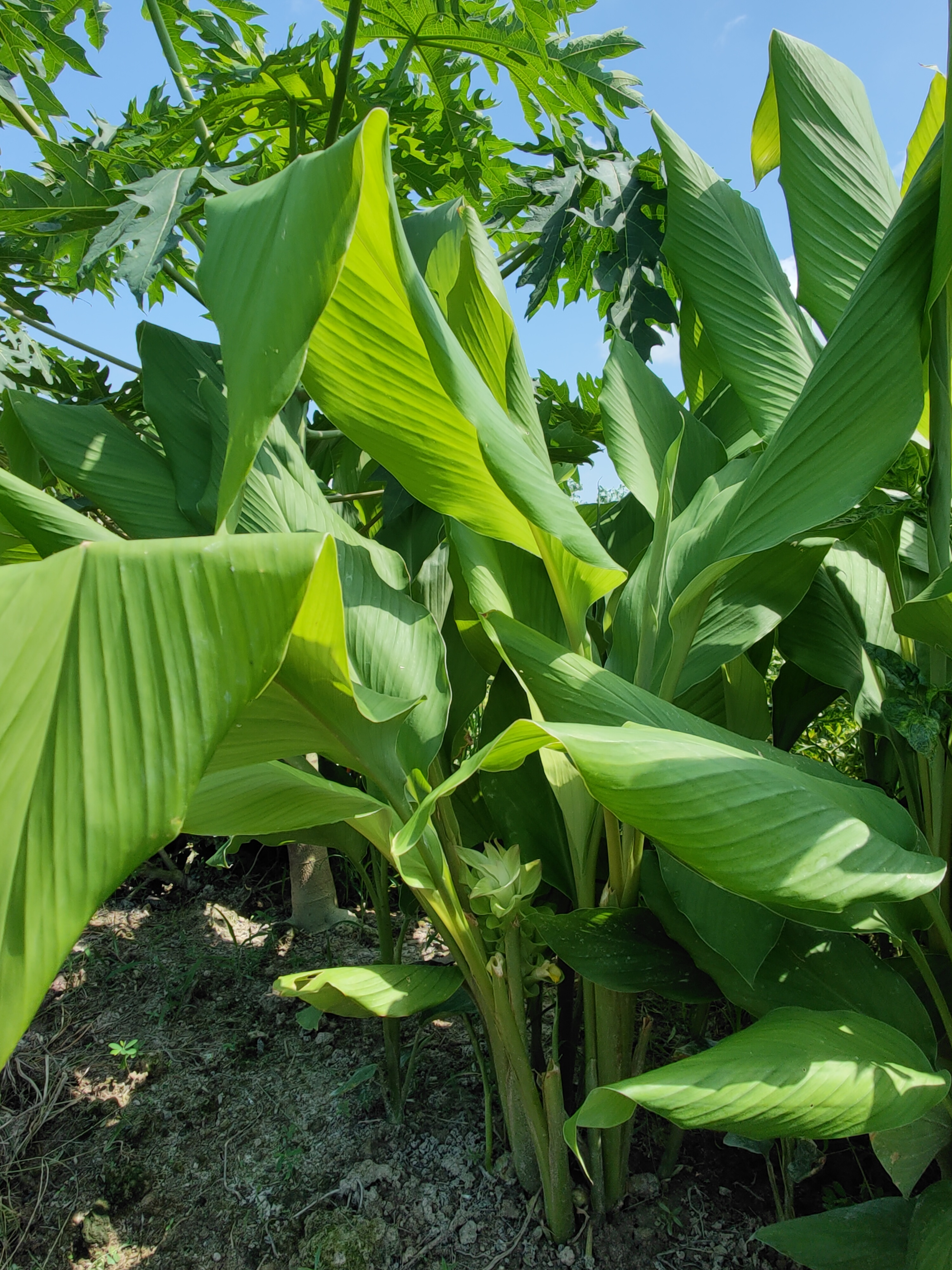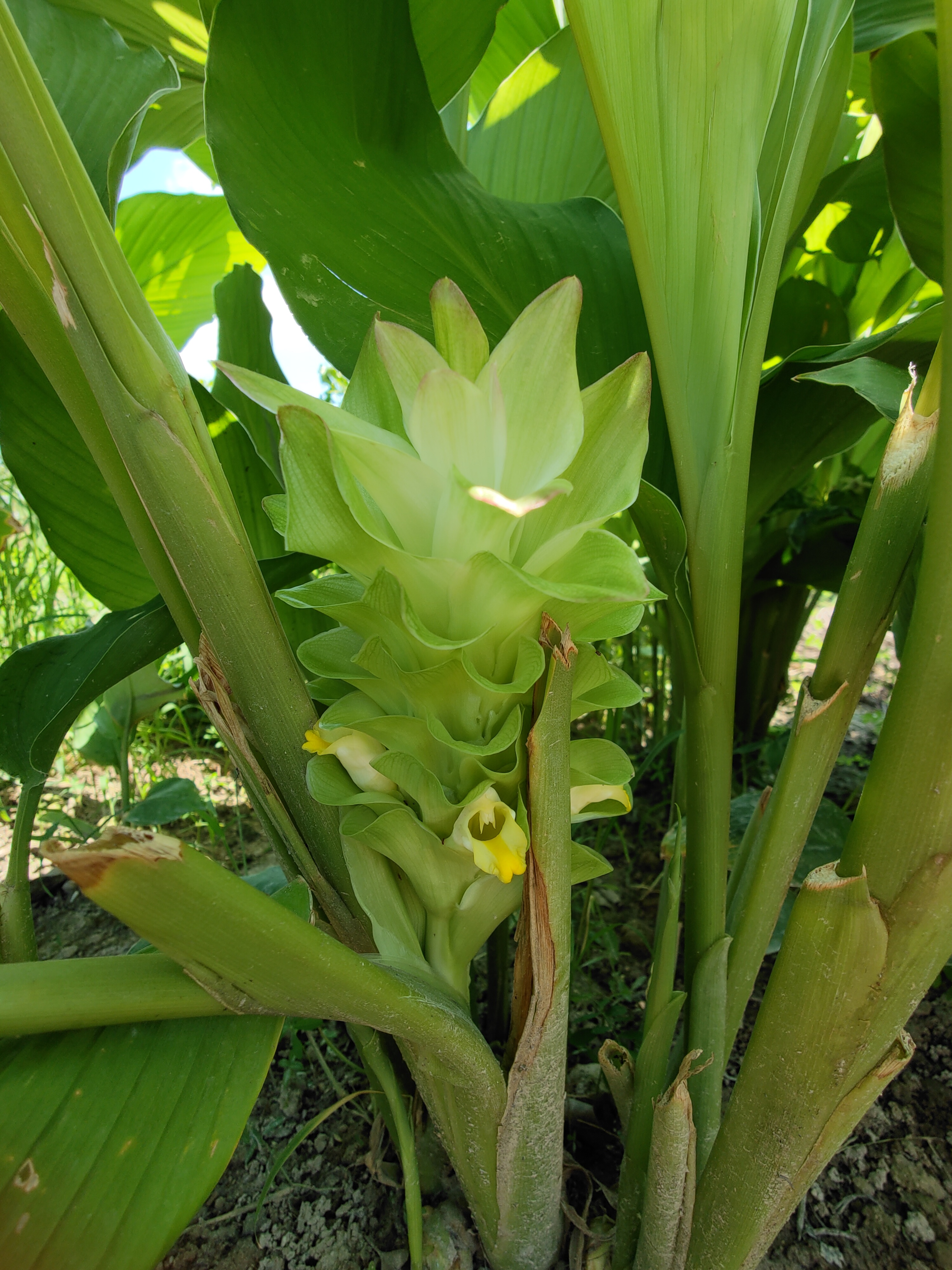Cekur (Kaempferia galanga)
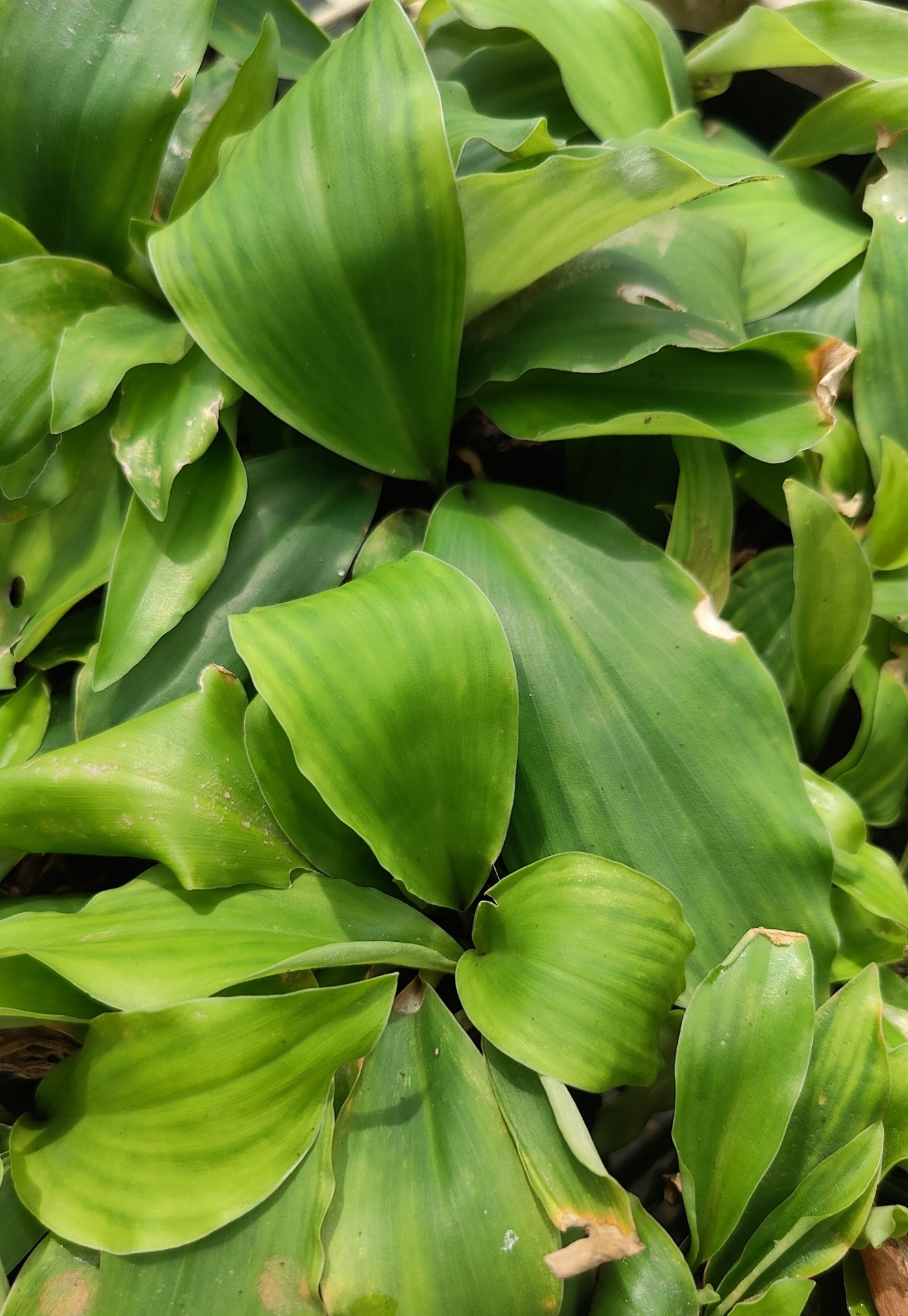
Leaves of Cekur growing flat to the ground (Photo credit: Pauline Tay)
The Cekur (Kaempferia galanga) or Kencur bears edible leaves and aromatic rhizomes that are widely used in a variety of Asian medicines and culinary dishes. The young leaves are usually eaten raw as salad or in nasi kerabu (a Malay herb rice dish) while the rhizomes are usually used in cooking as a spice. Studies have also shown that leaves and rhizomes of Cekur have antioxidant, anti-inflammatory and wound-healing properties, making them important ingredients in the traditional medicine. For example, Cekur can be found in Indian Ayurvedic formulations for rheumatism, Thai traditional medicine for menstrual disorders in Thailand traditional medicine, and in a Malaysian herbal preparation called Jamu.
The Cekur grows horizontally in a rosette pattern, close to the ground. Its broad egg-shaped leaves are smooth on the upper surface but hairy and velvety to the touch on its undersides. Its delicate white flowers tinged with purple are shaped like butterflies and last for a day. Rhizomes and young seedlings are sold in our local wet markets like Tekka Centre or Geylang Serai Market.
To grow Cekur, the whole rhizome clump can be planted directly into fertile loamy soil such as garden soil or potting mix at depths of 2 to 3 cm. Choose wide pots of at least 20 cm wide and 20 cm depth for two or three rhizome clumps as the rhizomes grow horizontally underground and wider pots provide more space for optimum growth. Cekur is shade loving and grows well with at least 6 hours of filtered sunlight daily. Water the plant only when the soil feels dry to the touch as overwatering can cause the rhizomes to rot. Shoots usually take about four weeks to form from the point of planting and the leaves can be harvested in four months while rhizomes can be harvested in about 10 months. To harvest, gently uncover the rhizomes and dig them up with a small spade.
Growing these gingers is easy, these aromatic flowering plants are also beneficial for health and can be used in so many ways. Add these gingers into your home gardens and enjoy a bountiful harvest!
Learning More
If you are a gardening newbie, visit NParksSG, our YouTube Channel that serves as a one-stop repository for some 300 video resources. It covers topics ranging from types of soil needed for your garden and how to plant, harvest and even cook your edibles.
For more information about the flora and fauna found in Singapore, please visit Flora and Fauna Web.
If you like what you read, follow us on Facebook, Instagramand Telegram to get the latest updates.
Text by Pauline Tay




